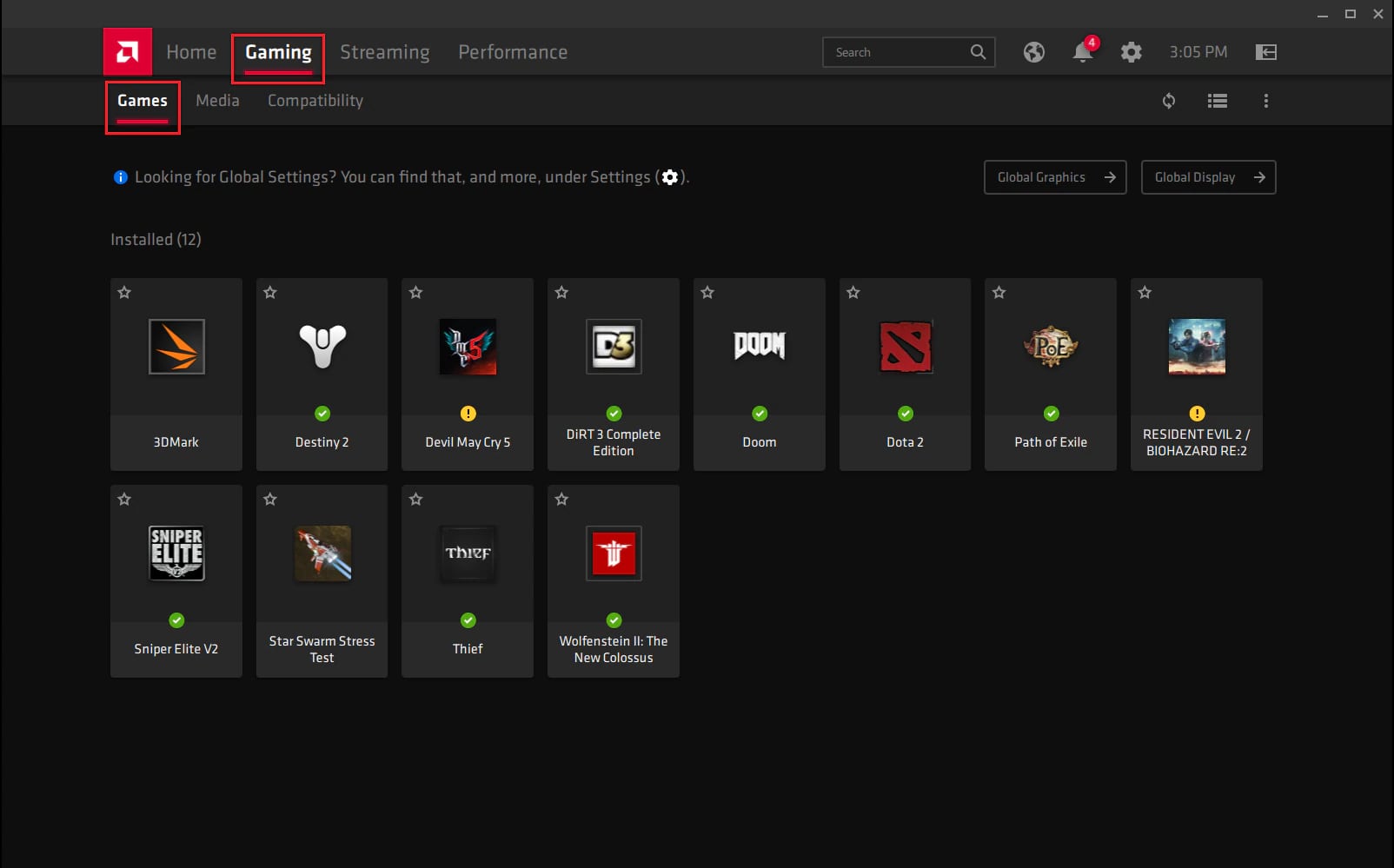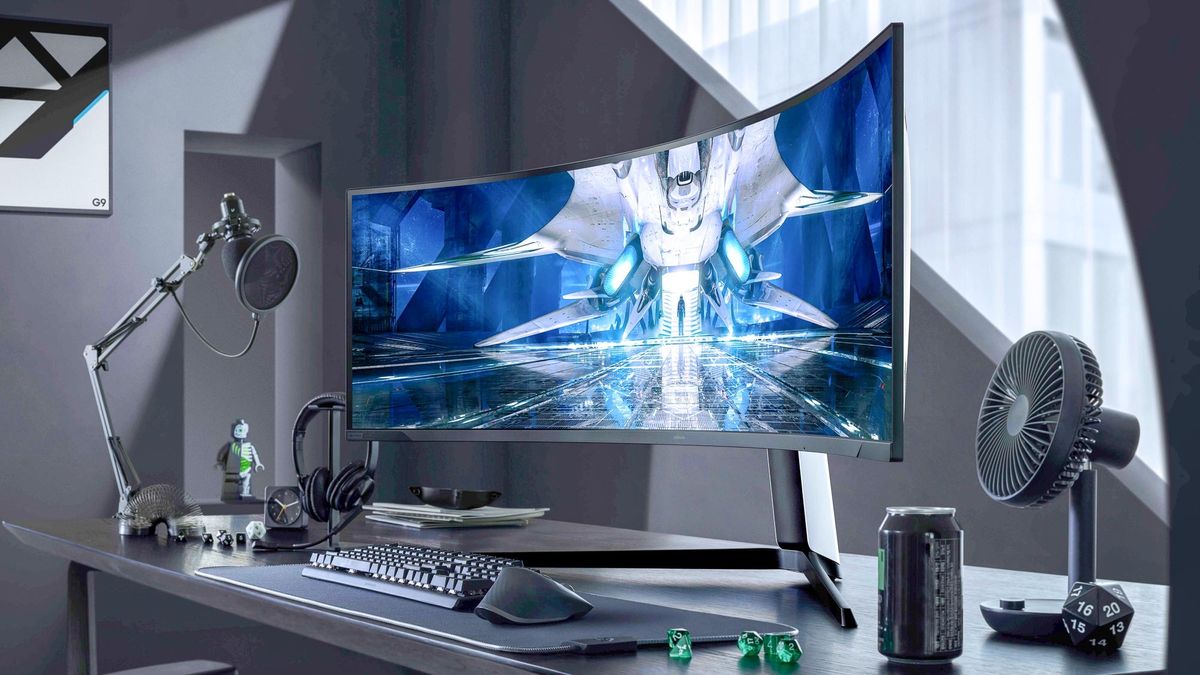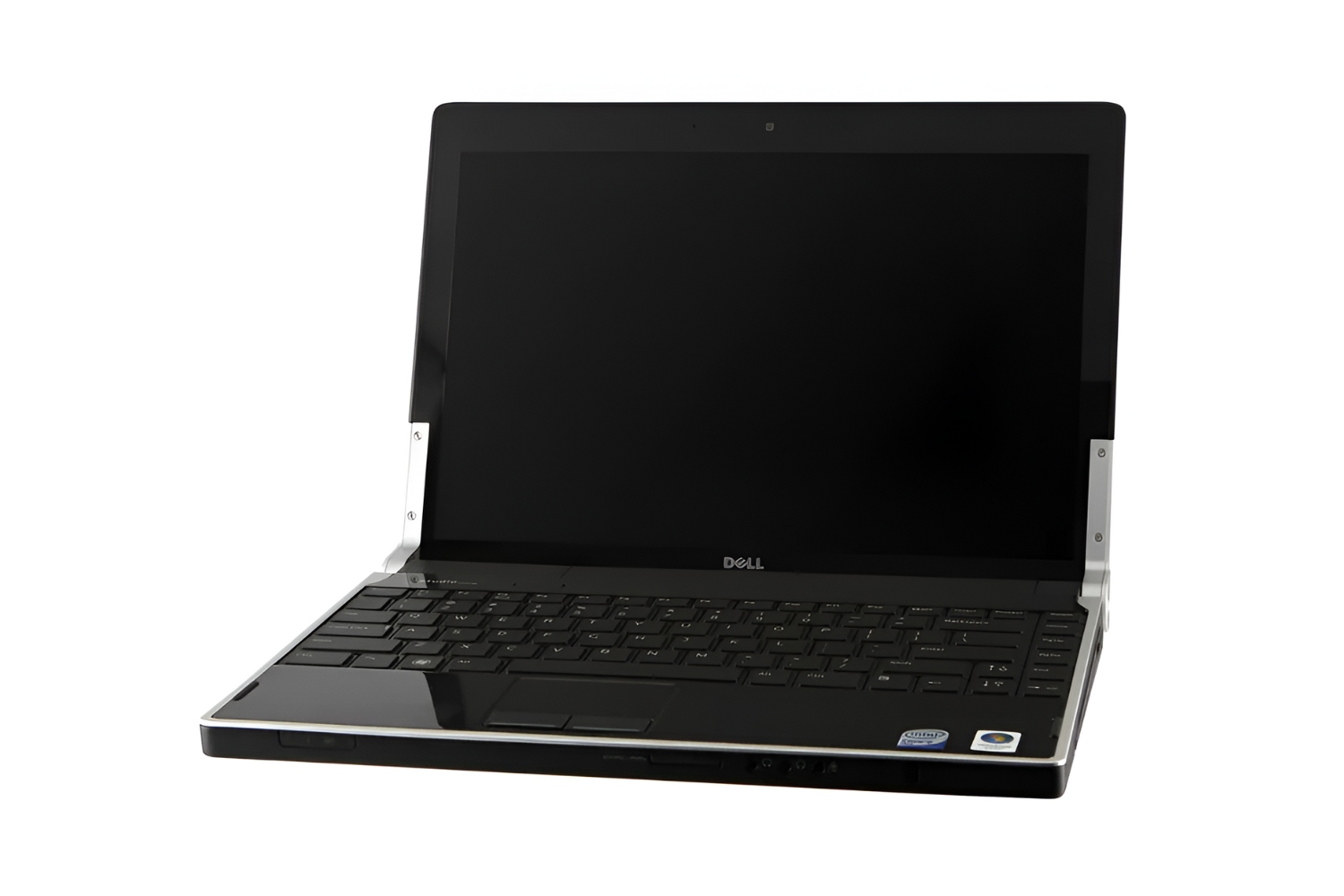Introduction
A graphics card plays a crucial role in modern computer systems, handling the complex task of rendering images, videos, and animations. Without a graphics card, the visual experience and performance of a computer may be significantly affected. However, there are instances when you might consider disabling your graphics card for troubleshooting or other reasons. In this article, we will explore the potential consequences of disabling your graphics card and discuss how it can affect your overall computing experience.
A graphics card, also known as a video card or GPU (Graphics Processing Unit), is a dedicated component responsible for rendering and displaying visual content on your computer screen. It acts as a separate processing unit specialized in handling graphical computations and alleviates the burden on the computer’s CPU (Central Processing Unit).
The main function of a graphics card is to convert data from the computer into a signal that can be understood by the display monitor. It processes graphical data, including images, videos, games, and other visual content, and sends the final output to the monitor for display. This allows for smoother animations, realistic visual effects, and improved overall performance in tasks involving graphics-intensive applications.
Disabling your graphics card can have several significant effects on your computer’s functionality. The most noticeable impact is the loss of visual display. Without an active graphics card, your screen may become blank, resulting in an inability to interact with your computer visually. This can be problematic for tasks such as browsing the web, working on documents, or even simple navigation within the operating system.
Another significant effect of disabling the graphics card is the impact on gaming performance. Many modern games require a dedicated graphics card to achieve optimal visual quality and frame rates. Disabling the graphics card can result in reduced graphics settings, lower resolution, and choppy gameplay. Gaming enthusiasts would need to rely on the integrated graphics capabilities of the CPU, which may not offer the same level of performance as a dedicated graphics card.
Besides gaming, the multimedia experience on your computer will also be affected. Disabling the graphics card can lead to a decrease in the quality of video playback, making videos appear laggy or pixelated. Tasks such as video editing or graphic design that heavily rely on smooth rendering and accurate color reproduction might become difficult or impossible without a graphics card.
Hardware acceleration is another feature that relies on the capabilities of the graphics card. Disabling the graphics card can result in the loss of this feature, which can affect the performance of applications that heavily depend on it. Tasks like video encoding, 3D modeling, or scientific simulations may take significantly longer to complete without hardware acceleration.
It’s also important to note that disabling the graphics card may potentially impact other hardware components in your computer system. Some motherboards automatically adjust certain system settings based on the presence or absence of a graphics card. Disabling the graphics card might interfere with these settings and cause compatibility issues with other hardware devices or even the operating system itself.
While it is possible to use a computer without a graphics card by relying solely on the integrated graphics capabilities of the CPU, the experience may be limited and constrained. Simple tasks like web browsing or word processing can still be performed, but tasks that require advanced graphical processing or intensive computing may not be feasible.
Overall, disabling your graphics card can have significant consequences on your computer’s visual display, gaming performance, multimedia experience, hardware acceleration, and compatibility with other components. It’s important to carefully consider the implications before making a decision to disable your graphics card, and always consult the appropriate resources or seek professional advice if needed.
What is a Graphics Card?
A graphics card, also known as a video card or GPU (Graphics Processing Unit), is a vital component of modern computer systems. It is responsible for rendering and displaying visual content, including images, videos, games, and animations, on your computer screen.
At its core, a graphics card is a specialized processing unit dedicated to handling graphical computations. It serves as a separate entity from the CPU (Central Processing Unit) and focuses on processing and generating visual data. This division of labor allows for efficient and optimized performance, as the graphics card can handle the labor-intensive task of rendering graphics, thus freeing up the CPU for other computations.
The graphics card consists of several key components, including the GPU itself, video memory, and various connectors. The GPU is the heart of the graphics card and is responsible for executing the complex calculations required for visual rendering. It comprises thousands of tiny processors, known as shader cores, which work together to process graphical data.
Video memory, also known as VRAM, is a specialized form of memory that stores data related to graphics operations. It acts as a dedicated cache for frequently accessed graphics data, enabling faster access and manipulation. The amount and type of video memory available on a graphics card play a significant role in determining its performance and capability to handle high-resolution graphics.
A graphics card also includes various connectors, such as DisplayPort, HDMI, and DVI ports, which allow for the connection of displays or other peripherals. These connectors enable the transfer of the processed visual data from the graphics card to the display device, ensuring that the final output is accurately reproduced on the screen.
One of the most important factors in determining the performance of a graphics card is its GPU architecture. Different manufacturers, such as NVIDIA and AMD, develop their own GPU architectures, with each generation bringing improvements in performance, power efficiency, and feature set. The GPU architecture directly affects the amount of calculations the graphics card can handle, the speed at which it can process data, and the overall graphical capabilities it offers.
Graphics cards are not limited to desktop computers; they are also found in laptops and other portable devices. In these cases, the graphics cards are often compact and integrated into the motherboard to save space and power. However, they still perform the same functions as their desktop counterparts, enabling smooth graphics rendering and display.
Overall, the graphics card is a vital component for a high-quality visual experience on a computer. It allows for the seamless rendering of images, videos, and animations, enhancing gaming experiences, multimedia content creation, and overall user satisfaction. The advancements in graphics card technology continue to push the boundaries of visual realism and performance, making them a key component in modern computing.
Functions of a Graphics Card
A graphics card serves several important functions in a computer system, all of which contribute to the overall visual experience and performance. Understanding these functions can help us appreciate the significance of a graphics card in modern computing.
One of the primary functions of a graphics card is to process and render visual content. It takes data from the CPU and performs complex calculations to create images, videos, and animations. These calculations involve tasks such as texture mapping, lighting calculations, and polygon rendering. The graphics card’s powerful GPU (Graphics Processing Unit) executes these calculations efficiently, ensuring smooth and realistic graphics for games, videos, and other visual applications.
Another crucial function of a graphics card is to optimize the rendering process through parallel processing. Unlike the CPU, which handles tasks sequentially, the GPU of a graphics card can simultaneously perform multiple calculations on different elements of an image. This parallel processing capability allows for faster rendering and improved performance in tasks that require intensive graphics processing, such as 3D modeling, video editing, and gaming.
Graphics cards also play a significant role in optimizing the display output. They provide hardware acceleration, which means they offload certain processing tasks from the CPU and handle them more efficiently. Common examples include video decoding and encoding, where a graphics card can handle the heavy lifting, resulting in smoother playback and faster processing of multimedia content.
In addition to processing and rendering, a graphics card is responsible for managing the memory required for visual operations. Video memory, or VRAM, acts as a dedicated cache for housing textures, shaders, and other graphics data. By having dedicated video memory, the graphics card can access and manipulate this data much faster than if it had to rely on system memory. This high-speed access to video memory enables quick and seamless texture rendering, reducing loading times and improving overall graphics performance.
Another important function of a graphics card is to support multiple displays. Many graphics cards have multiple display output options, such as HDMI, DisplayPort, and DVI. This allows users to connect multiple monitors or other display devices to a single graphics card, extending their desktop workspace or enabling multi-monitor setups for improved productivity or immersive gaming experiences.
Graphics cards also facilitate the rendering of high-resolution visuals. Higher resolution monitors demand more computational power to render the increased pixel count. Graphics cards with robust GPUs and ample VRAM excel at handling high-resolution displays, delivering crisp and detailed images without sacrificing performance.
Lastly, graphics cards provide additional features and technologies to enhance the overall visual experience. These include anti-aliasing, which smoothens jagged edges in graphics, and anisotropic filtering, which improves the clarity and sharpness of textures. Graphics cards also support advanced shading techniques, dynamic lighting effects, and other graphical enhancements that contribute to more visually stunning and immersive graphics.
In summary, a graphics card performs essential functions such as processing and rendering visual content, optimizing display output, managing memory efficiently, supporting multiple displays, facilitating high-resolution graphics, and offering additional features for enhanced visuals. By handling graphics-intensive tasks, a graphics card significantly enhances the overall visual experience and performance of a computer system.
Effects of Disabling the Graphics Card
Disabling the graphics card in a computer can have several significant effects on its functionality and overall user experience. While there may be legitimate reasons to disable the graphics card, it’s important to be aware of the potential consequences before making such a decision.
The most noticeable effect of disabling the graphics card is the loss of visual display. Without an active graphics card, the computer screen may become blank or unresponsive. This means that users would be unable to interact with the computer visually, making tasks like web browsing, document editing, or even basic operating system navigation nearly impossible.
Another major effect of disabling the graphics card is the impact on gaming performance. Many modern games require a dedicated graphics card to achieve optimal visual quality and frame rates. Disabling the graphics card would result in reduced graphics settings, lower resolution, and potentially choppy gameplay. Gaming enthusiasts would have to rely on the integrated graphics capabilities of the CPU, which typically cannot match the performance of a dedicated graphics card.
Aside from gaming, the multimedia experience on the computer would also be severely affected. Disabling the graphics card can lead to a decrease in the quality of video playback, making videos appear laggy, pixelated, or even unplayable. Tasks like video editing, graphic design, or 3D rendering, which heavily rely on smooth rendering and accurate color reproduction, may become challenging or impossible without a dedicated graphics card.
Hardware acceleration is another significant feature provided by graphics cards. Disabling the graphics card would result in the loss of this hardware acceleration capability. Hardware acceleration refers to the offloading of certain processing tasks from the CPU to the graphics card, resulting in faster and more efficient operations. Applications that heavily depend on hardware acceleration, such as video encoding, 3D modeling, or scientific simulations, may experience greatly reduced performance or extended processing times.
Moreover, disabling the graphics card may have potential effects on other hardware components in the computer system. Some motherboards automatically adjust system settings based on the presence or absence of a graphics card. Disabling the graphics card can interfere with these settings, potentially causing compatibility issues with other hardware devices or even the operating system itself.
While it is possible to use a computer without a graphics card by relying solely on the integrated graphics capabilities of the CPU, the overall experience may be limited and constrained. Simple tasks like web browsing, word processing, or basic multimedia playback can still be performed. However, tasks that require advanced graphics processing or intensive computing may not be feasible without a dedicated graphics card.
In summary, disabling the graphics card can have substantial consequences on the visual display, gaming performance, multimedia experience, hardware acceleration, and compatibility with other components of a computer system. It is crucial to carefully consider the implications and consult appropriate resources or seek professional advice before making a decision to disable the graphics card.
Loss of Visual Display
One of the most noticeable effects of disabling the graphics card in a computer is the loss of visual display. Without an active graphics card, the computer screen may become blank or unresponsive, resulting in an inability to interact with the computer visually. This can have a significant impact on the overall usability and functionality of the system.
Disabling the graphics card means that the computer will not be able to generate and output visual content. As a result, tasks that rely on visual feedback, such as web browsing, document editing, or navigating the operating system, become nearly impossible. Without a functional graphics card, the screen remains black or displays unintelligible and distorted graphics, making it difficult or even impossible to perform basic computing tasks.
In addition, the loss of visual display can create frustrations and complications when troubleshooting computer issues. Without the ability to see error messages, system prompts, or diagnostic information, it becomes challenging to identify and resolve problems. This lack of visual feedback limits the user’s ability to diagnose issues and may require alternative methods, such as using another device or relying on audio cues to navigate the system.
Moreover, the loss of visual display can hinder collaboration and productivity, especially in professional settings. In office environments, where collaboration and sharing of information are critical, the inability to view and share visual content can hinder communication and impede workflow. This could necessitate alternative methods of sharing information, such as relying solely on written communication or using external devices to mirror the screen on another monitor.
Another aspect affected by the loss of visual display is user experience in multimedia applications. Disabling the graphics card can lead to a decrease in the quality of video playback, making videos appear laggy, pixelated, or even unplayable. This can greatly impact the enjoyment of movies, streaming content, or other multimedia activities. Additionally, graphical content creation tasks, such as graphic design or video editing, become nearly impossible without a functional graphics card to provide accurate on-screen representations of images or video content.
It’s important to note that while the loss of visual display can be highly inconvenient and disruptive, it does not render the computer completely unusable. Basic tasks that do not require active visual output, such as file transfers, background processes, or command line operations, can still be performed. Moreover, users can rely on alternative methods of accessing and controlling the computer, such as remote desktop software or SSH connections, to interact with the system without the need for direct visual feedback.
In summary, disabling the graphics card results in a loss of visual display, making it difficult or impossible to perform tasks that rely on visual feedback. This can affect usability, troubleshooting, collaboration, and multimedia experiences. While basic non-graphical tasks can still be performed, the absence of visual output significantly limits the functionality and user experience of the computer system.
Impact on Gaming Performance
Disabling the graphics card in a computer can have a significant impact on gaming performance, as many modern games require a dedicated graphics card to achieve optimal visual quality and frame rates. When the graphics card is disabled, the system must rely on the integrated graphics capabilities of the CPU, which often cannot match the performance of a dedicated graphics card.
One of the major drawbacks of using integrated graphics for gaming is the reduced graphical settings and lower resolution. Integrated graphics processors typically have limited processing power and a smaller amount of video memory compared to dedicated graphics cards. As a result, games may need to be played at lower graphical settings and resolutions to maintain playable frame rates. The reduced visual fidelity can diminish the immersive experience and visual quality of the game.
Another notable impact on gaming performance is the lack of dedicated graphical hardware. Dedicated graphics cards are designed specifically for graphics-intensive tasks, enabling smoother gameplay, better visual effects, and improved frame rates. Disabling the graphics card means losing access to its powerful GPU (Graphics Processing Unit), which can handle complex calculations required for realistic graphics and physics simulations in games.
The absence of a dedicated graphics card also affects the overall rendering performance of games. Graphics cards are optimized for parallel processing, allowing for simultaneous execution of multiple graphical calculations. This parallel processing capability significantly boosts rendering performance and results in smoother gameplay with faster frame rates. Integrated graphics, on the other hand, struggle to match the parallel processing power of dedicated graphics cards, leading to lower frame rates and potential input lag.
Furthermore, disabling the graphics card may limit access to certain advanced features and technologies present in modern games. Many games utilize specific graphics card features, such as advanced shading techniques, tessellation, or real-time ray tracing, to enhance visual fidelity and realism. Without a dedicated graphics card, these features may not be supported or will have to be disabled, resulting in a less visually stunning gaming experience.
It’s worth mentioning that not all games will be unplayable without a graphics card. Older or less graphically demanding games, as well as certain indie titles, may be playable with integrated graphics. However, players should expect compromised visual quality, reduced performance, and the need to adjust graphical settings to achieve playable frame rates.
In summary, disabling the graphics card has a significant impact on gaming performance. The lack of a dedicated graphics card leads to reduced graphical settings, lower resolutions, potentially lower frame rates, and the inability to take advantage of advanced graphics features. The gaming experience may become less immersive, visually appealing, and may require sacrifices in gameplay smoothness. It’s important to consider these factors before deciding to disable the graphics card, especially for those who prioritize gaming performance.
Reduced Multimedia Experience
Disabling the graphics card can have a significant impact on the multimedia experience, as the graphics card plays a crucial role in rendering and enhancing visual content. Without a functional graphics card, the overall quality and performance of multimedia applications can be negatively affected.
One of the notable effects of disabling the graphics card is the degradation of video playback quality. The graphics card typically handles the decoding and rendering of video files, ensuring smooth playback and optimal visual quality. Without a dedicated graphics card, the CPU may struggle to handle the complex video decoding process, resulting in choppy playback, dropped frames, or even inability to play certain video formats altogether.
In addition to video playback, graphics cards contribute to the overall visual quality and realism of multimedia content. Disabling the graphics card can lead to a decrease in the quality of graphics and images displayed on the screen. This can be especially noticeable in applications such as photo and image editing software, where accurate color reproduction and high-resolution rendering are essential for achieving professional results.
Tasks that heavily rely on GPU-accelerated processing, such as video editing or 3D rendering, may become significantly impacted without a functioning graphics card. The graphics card utilizes its powerful GPU to handle complex calculations and render high-quality visuals efficiently. Disabling the graphics card means these tasks will need to rely solely on the CPU, which may result in slower processing times and decreased performance.
Another aspect of multimedia that can be affected by disabling the graphics card is the ability to play graphically demanding games or run multimedia applications that require advanced graphics capabilities. Many modern games and multimedia software rely on the dedicated processing power and features provided by graphics cards to deliver realistic graphics, special effects, and smooth performance. Disabling the graphics card means losing access to these enhanced visual experiences, resulting in reduced enjoyment and limited functionality.
Furthermore, graphics cards are often equipped with dedicated video memory, or VRAM, which helps store and access frequently used graphical data quickly. Disabling the graphics card means losing access to this dedicated video memory, which can impact the overall performance and responsiveness of multimedia applications that heavily rely on rapid data access, such as real-time graphics rendering or video editing.
It’s important to note that although a computer can still function without a graphics card by relying on integrated graphics, the overall multimedia experience may be compromised. Simple tasks like web browsing or playing low-demand videos may still be feasible. However, for professional multimedia users or those who require high-quality graphics and smooth performance, a functional graphics card is essential.
In summary, disabling the graphics card can result in a reduced multimedia experience. The lack of a dedicated graphics card can lead to lower video playback quality, decreased visual realism, slower processing times in graphics-intensive tasks, and the loss of access to advanced graphical features. It’s crucial to assess the impact on multimedia usage before deciding to disable the graphics card, especially for users who heavily rely on multimedia applications or enjoy graphically demanding games.
Unavailability of Hardware Acceleration
Hardware acceleration is a key feature provided by graphics cards that offloads certain processing tasks from the CPU and delegates them to the dedicated hardware of the graphics card. Disabling the graphics card means the loss of this hardware acceleration capability, which can impact the performance of various applications that heavily depend on it.
Hardware acceleration is commonly utilized in multimedia applications, such as video playback, video editing, and graphics-intensive tasks. When the graphics card is enabled, it takes on the responsibility of decoding and rendering videos, resulting in smoother playback and improved performance. Disabling the graphics card forces the CPU to handle these tasks, which can be resource-intensive and result in choppy playback, increased CPU usage, and decreased overall performance.
In addition to video playback, hardware acceleration significantly speeds up the rendering and manipulation of graphical elements in applications like image editing software and 3D modeling programs. These applications leverage the dedicated processing power of the graphics card to handle complex calculations, apply special effects, and generate realistic visuals. Disabling the graphics card means these tasks will be solely dependent on the CPU, leading to slower processing times, less fluid interactions, and potentially limited functionality.
Another area where hardware acceleration is crucial is web browsing. Modern web browsers utilize hardware acceleration to enhance the rendering and performance of web content, including rich media such as videos, animations, and graphics. With the graphics card disabled, the browser will rely entirely on the CPU, which may result in slower page loading times, decreased responsiveness, and less fluid scrolling and interaction.
Furthermore, certain applications rely on hardware acceleration for optimized performance in areas like data processing, scientific simulations, or virtual reality experiences. These applications leverage the parallel processing power of the GPU to expedite computations and achieve faster results. By disabling the graphics card, these applications lose access to the specialized hardware, leading to decreased performance, increased processing times, and potentially inhibiting the functionality of the software.
It’s important to note that not all applications rely on hardware acceleration, and many can still function without a dedicated graphics card. However, the absence of hardware acceleration can significantly impact the performance, responsiveness, and overall user experience in tasks that heavily depend on it.
In summary, disabling the graphics card results in the unavailability of hardware acceleration, severely impacting the performance of various applications that rely on this feature. The loss of hardware acceleration can lead to choppy video playback, decreased performance in graphics-intensive tasks, slower web browsing experience, and reduced efficiency in applications that require parallel processing capabilities. Consider the implications on application performance and functionality before disabling the graphics card, especially in tasks that heavily rely on hardware acceleration.
Potential Impact on Other Hardware
Disabling the graphics card can potentially have an impact on other hardware components in the computer system. This is because some motherboards automatically adjust certain system settings based on the presence or absence of a graphics card. Disabling the graphics card can interfere with these settings, leading to compatibility issues or unexpected behavior with other hardware devices or even the operating system itself.
One common impact of disabling the graphics card is the alteration of system settings related to display output. When a graphics card is present, the motherboard typically routes the display output through the graphics card’s connectors, such as HDMI or DisplayPort. Upon disabling the graphics card, the motherboard may attempt to adjust the display output settings accordingly, such as switching to the integrated graphics connector. However, in some cases, this adjustment may not occur automatically, leading to a loss of display output or the need to manually change the settings in the BIOS.
Another potential impact is related to power management. Graphics cards often require additional power beyond what the motherboard can provide through the PCI Express slot. To cater to this power demand, modern motherboards include specialized connectors, such as PCIe power connectors, to supply the necessary power to the graphics card. Disabling the graphics card may cause the motherboard to no longer distribute power through these connectors, potentially affecting other hardware devices that rely on them.
In addition, disabling the graphics card can have implications for the performance and operation of other hardware components that rely on the graphics card for certain functionalities. For example, certain audio devices or USB devices may leverage the graphics card’s capabilities for audio processing or video signal transmission. Disabling the graphics card could result in the loss of these functionalities or require alternative configurations to ensure the proper operation of such devices.
Furthermore, the operating system itself may be impacted by the absence of a graphics card. Operating systems typically include device drivers specifically designed for graphics cards to ensure compatibility and proper functioning. Disabling the graphics card may result in the operating system not loading or recognizing the appropriate drivers, potentially leading to limited functionality, reduced performance, or system instability.
It’s important to note that the potential impact on other hardware components can vary depending on the specific computer system, motherboard, and drivers being used. It is advised to consult the motherboard manufacturer’s documentation, support resources, or seek professional advice to better understand the potential consequences of disabling the graphics card on other hardware components.
In summary, disabling the graphics card can potentially impact other hardware components in the computer system. This can include display output settings, power distribution, functionality of other hardware devices, and operating system compatibility. Understanding the potential implications and seeking appropriate guidance can help mitigate any unforeseen issues that may arise when disabling the graphics card.
Can I Still Use My Computer Without a Graphics Card?
Yes, it is possible to use a computer without a graphics card by relying solely on the integrated graphics capabilities of the CPU. However, there are certain limitations and considerations to keep in mind when using a computer without a dedicated graphics card.
Integrated graphics, also known as onboard graphics or integrated GPUs (Graphics Processing Units), are built into the CPU and provide basic graphical capabilities. They are designed to handle everyday tasks that do not require heavy graphics processing, such as web browsing, word processing, or watching videos at lower resolutions.
Without a graphics card, the computer will still be functional for performing basic tasks like accessing the internet, checking emails, or using productivity software. These tasks primarily rely on the CPU and do not require the advanced graphical capabilities provided by a dedicated graphics card.
However, there are several limitations to consider when using integrated graphics. For instance, gaming performance will be significantly impacted as integrated graphics are not designed to handle graphically demanding games. You may have to lower graphics settings, limit your choice of games to less demanding titles, or experience lower frame rates and decreased visual quality compared to using a dedicated graphics card.
In addition, multimedia experiences can be compromised without a dedicated graphics card. Video playback may be less smooth and lower in quality, especially when dealing with high-resolution or high-bitrate videos. Tasks such as video editing, 3D rendering, or graphic design that heavily rely on advanced graphical processing will be considerably slower and less efficient compared to using a dedicated graphics card.
Another factor to consider is hardware acceleration. Integrated graphics may not provide the same level of hardware acceleration support as a dedicated graphics card. Applications that require hardware acceleration, such as video editing software or scientific simulations, may experience slower performance or lack certain features when relying solely on integrated graphics.
Despite these limitations, it’s important to note that a computer can still be used without a graphics card for everyday tasks and basic computing needs. Operating systems are designed to be compatible with integrated graphics, and most software will work without issues. It’s also worth mentioning that using only integrated graphics can result in lower power consumption and quieter operation as dedicated graphics cards tend to generate more heat and noise.
If advanced graphical capabilities are required for gaming, multimedia tasks, or other graphically demanding applications, a dedicated graphics card is strongly recommended. It provides superior performance, better visual quality, and the ability to handle complex graphics computations. Users who rely on such applications or desire a more immersive visual experience should consider investing in a dedicated graphics card.
In summary, a computer can still be used without a graphics card by using the integrated graphics capabilities of the CPU. While it is possible to perform basic tasks, gaming performance, multimedia experiences, and hardware acceleration capabilities will be limited. For users seeking advanced graphical capabilities or enhanced visual experiences, a dedicated graphics card is essential.
Conclusion
Disabling the graphics card in a computer can have significant consequences on its visual display, gaming performance, multimedia experience, hardware acceleration, and compatibility with other hardware components. It’s important to carefully consider the potential impacts before deciding to disable the graphics card.
A graphics card plays a crucial role in modern computer systems, handling the complex task of rendering images, videos, and animations. It offloads graphical computations from the CPU, resulting in smoother graphics, improved performance, and enhanced visual experiences.
Disabling the graphics card leads to a loss of visual display, making it nearly impossible to interact with the computer visually. Basic tasks like web browsing, document editing, or operating system navigation become challenging or unfeasible without an active graphics card.
Gaming performance is another area significantly affected by disabling the graphics card. Many modern games require a dedicated graphics card to achieve optimal visual quality and smooth gameplay. Disabling the graphics card results in reduced graphical settings, lower resolution, and potentially choppy gameplay.
The multimedia experience is also impacted when the graphics card is disabled. Video playback quality and performance may suffer, making videos appear laggy or pixelated. Tasks like video editing, graphic design, or 3D rendering become challenging without the dedicated processing power of a graphics card.
Disabling the graphics card means the loss of hardware acceleration, which can result in decreased performance in applications that rely on this feature. Hardware acceleration speeds up tasks such as video decoding, graphical rendering, and data processing, resulting in smoother performance and improved efficiency.
Furthermore, disabling the graphics card may interfere with other hardware components in the computer system. Settings related to display output, power management, and the functionality of certain devices may be affected. Compatibility issues with the operating system or other hardware devices could arise as well.
However, it is still possible to use a computer without a graphics card by relying solely on the integrated graphics capabilities of the CPU. Basic tasks like web browsing, word processing, or using productivity software can still be performed. But for those who require advanced graphical capabilities, rely on gaming performance, or seek an immersive multimedia experience, a dedicated graphics card is highly recommended.
In conclusion, disabling the graphics card should be a carefully considered decision, weighing the potential impacts on visual display, gaming performance, multimedia experience, hardware acceleration, and compatibility with other hardware components. Understanding these consequences ensures that users can make informed decisions that align with their specific needs and requirements.

























